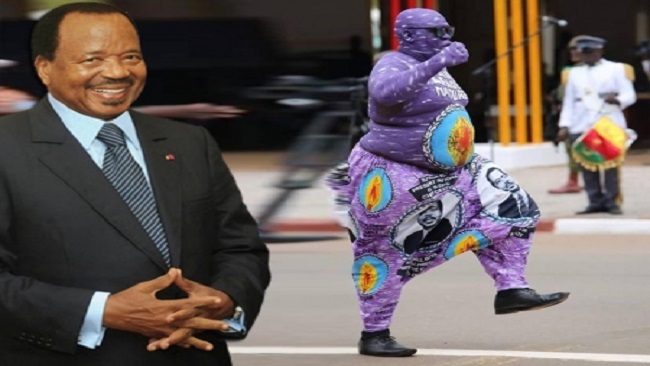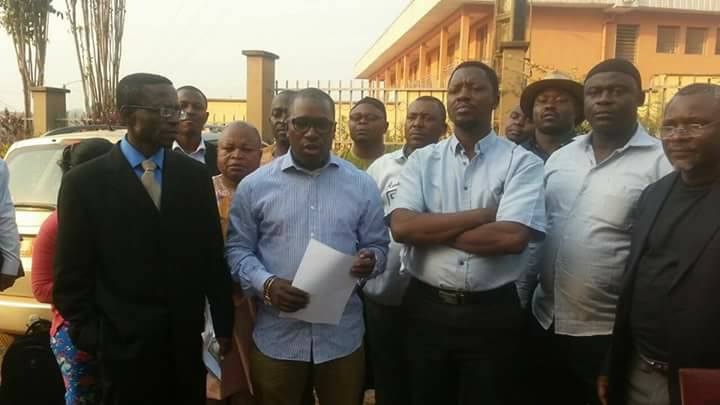Sunday November 6, 2016 will mark the 34th anniversary of President Paul Biya’s presidency. President Paul Biya took over power from his predecessor, President Ahmadou ahidjo who resigned after reigning over Cameroon with an iron fist for 22 years (1960-1982). He handed over power to Biya, the Prime Minister at the time and who was his Constitutional heir.
When Ahidjo handed over power to Biya, Cameroon was on the path to becoming an emerging economy. Civil servants were well paid. Corruption was minimal. Admission into top government institutions was purely based on merit by passing the competitive entrance examination, our Diplomacy was vibrant and dynamic, University students did not pay tuition fee and they had a monthly allowance provided by government.
Truth be told, the Ahidjo regime also hard its dark side. It was reputed for being brutal and oppressive towards all those who dared to criticize it. The ruthless manner in which the regime dealt with UPC sympathizers is one of the dark episodes in our nation’s history. The government had its enforcers who were known as the Brigade Mixte Mobile (BBM) – a combination of police, gendermarie and military officers who carried out political repression by singling out those who were considered dangerous opponents of the regime. They were either killed, tortured or they went into exile. The BBM operated detention camps at the Yoko prison, in the then Centre South Province and the Tcholliré prison in the then Grand North Province. Most people who were sent to these prisons never came out alive or came out with disabilities; fractured bones, deficient eye vision etc.
Despite the repressive nature of this regime, it was development oriented. Although a one party system was practiced in Cameroon from September 1, 1966, presidential elections were held in 1970, 1975, and 1980. There was what was called “Le plan de Quinqanat” which one can basically translate as “The 5 year development plan.” The incumbent President (Ahidjo) defined his plan of action to Cameroonians if elected for the next 5 years and before heading to the next election cycle, he will evaluate if he actually achieved what he set out for. If you were to ask many of our parents and elders who were born before 1982, they will tell you that they prefer the Ahidjo regime to the New Deal regime of President Biya.
Under the New Deal regime, we have gone from crises to crises, scandal to scandal. From the devaluation of the Franc CFA in 1994 which brought about the reduction in salaries of civil servants to the introduction of the Structural Adjustment Plan (SAP) by the Breton Woods Institution (the IMF and the World Bank). Coincidentally, it was after the devaluation of the Franc CFA in Cameroon that corruption actually went on the rise in our country.
I liken the New Deal regime to a poisoned chalice. Yes, a poisoned chalice because nothing good can come from it. It has taken everything good away from Cameroonians and even their hope for a better future. Yes, despite the many adversities we face in life, we always hope for a better future. But this evil regime is making hope to disappear.
1982-1984
This period was marked by the Biya-Ahidjo Rift which resulted in a series of disagreements between the incumbent President (Biya) and his predecessor and mentor (Ahidjo) who both had divergent views on how the country should be governed. These years were also characterized by the growing popularity of President Paul Biya. He was a young, handsome, and elegant person. I believe that the coup plotters of April 6, 1984 failed because they struck their coup at a very wrong period. Had they done it in the early 90’s, they might have perhaps succeeded, who knows?
1984-1987
These years witnessed a firm closure in the political system, contrary to the ideals of the New Deal which President Biya had promised Cameroonians. He began to surround himself with a very tight niche, and he was very careful with who he trusted, having learnt his lessons from the failed coup. This is when he began making more trips abroad, with the Intercontinental Geneva being his preferred destination.
He took drastic steps to conserve his power by abolishing the post of Prime Minister in 1984. A position he will only reintroduce in 1991 when the reintroduction of multi party politics made the political scene in Cameroon to be very agitated. Then at the New Deal Congress in Bamenda in March 1985, he destroyed the last relic of Ahidjoism- the CNU and created a political party fashioned in his image, the Cameroon People’s Democratic Movement (CPDM).
1987-1990
The economic crisis began to hit hard on Cameroon with the fall in the prices of products such as coffee, cocoa, banana etc in the world market and Cameroon was a major exporter of these cash crops. The Instant Misery Fund and the World Bank will gradually step in to shape government’s economic policy.
1990-1992
These are undoubtedly the most difficult years of Biya’s Presidency. On May 26, 1990, 6 persons are killed by our forces of Law and Order in Bamenda and it is under these circumstances that the Social Democratic Front (SDF) was born. With the collapse of the Berlin Wall which signaled the end of the Cold War (not a war fought in a fridge) as your History lecturer must have told you, and external influences like the speech given by French President, François Mitterand at the Franco-African Summit in La Baule, President Biya’s hand is forced and he opens up the political landscape. Multiparty politics is reintroduced in 1991. The first ever multiparty presidential elections are held on October 11, 1992, and Biya “The Lion Man” as he branded himself during the campaign is declared the winner contrary to popular view that Fru Ndi was robbed of his victory. The statement uttered by the then Chief Justice of the Supreme Court, Alexis Mouelle Dipanda who said: “My hands are tight. I am merely reading what was given to me” raises suspicions.
1992-2011
These years are characterized by inertia. Corruption, scandals, arrests of corrupt government officials, the Golden jubilee celebration of our armed forces etc.
2011-2014
Somehow, “The Lion Man” decides to rise from slumber and promises Cameroonians that if he is reelected, he will transform Cameroon into a vast construction site as from January 2012 by implementing the policy of ‘greater realisations’ which features the development of several infrastructural projects. Note that, a good number of these projects are located in his native South. They include:
The construction of the Hydro electric power dams in Lom Pangar, Memvele and Mekin
The construction of the natural gas plant in Kribi
The construction of the Kribi seaport
The construction of the 2nd bridge over River Wouri
The construction of the Ndogpassi gas plant in Douala
The construction of a new highway linking Douala and Yaoundé
2014 till date
Cameroon is faced with several security challenges with the repeated incursions from the terrorist sect Boko haram in the Far North region of the country. In July 2014, a raid is conducted in the private residence of the Vice Prime Minister, Ahmadou ali in Kolofata. Boko Haram repeatedly abducts both Cameroonians and foreigners, demanding a ransom in exchange for their release. In the Eastern Region too, the Seleka rebels from the war thorn Central African Republic (CAR) repeatedly penetrate on Cameroonian soil to kidnap hostages and to loot property.
In 1988, in an interview with Radio Monte Carlo (RMC) in Paris, France, a reporter asked President Biya what he will liked to be remembered for?
His response: “I will like to Cameroonians to remember me as the one who brought peace, democracy and prosperity.”
Well, what prevails today in Cameroon is a complete contrast to his wishes at the time.
Here are the 34 sins of the New Deal Regime.
THE 34 SINS OF THE NEW DEAL REGIME
1. Corruption A+
2. Bribery A+
3. Theft A+
4. Embezzlement A+
5. Mismanagement A+
6. Alcoholism A+
7. Laissez faire/Impunity A+
8. Nepotism A+
9. Tribalism A+
10. Favouritism A+
11. Mediocrity A+
12. Fraud A+
13. Homosexuality A+
14. Occultism A+
15. Ritual Crimes A+
16. Inertia A+
17. Underdevelopment A+
18. Mercantalization of health care A+
19. Unemployment and underemployment A+
20. Rigging of elections A+
21. Clientelism A+
22. Patronage A+
23. Administrative bottlenecks (Bureaucracy) A+
24. Lack of transparency and accountability A+
25. Stagnant diplomacy A+
26. Gerontocracy A+
27. Kleptocracy A+
28. Mafia Networks A+
29. Abuse of power A+
30. Abject misery and poverty A+
31. Oppression of the masses B+
32. Lack of foresight (Proactiveness) A+
33. Oligarchy B
34. Energy shortage and lack of pipe borne water A+
Bonus
Assassination of Cameroon Airlines and its eventual heir, Camair-co A+
Poor road maintenance and dilapidated transportation network A+
Mercantalization of competitive entrance examinations into top government schools A+
‘Coup de coeur’ scandal of the 1994 FIFA World Cup in the USA A+
‘Effort de guerre’ scandal (donations to support our soldiers at the war front in the fight against Boko Haram which started in 2015) A+
Terrorism D
Brian Njotsa
Political Analyst, BaretaNews





